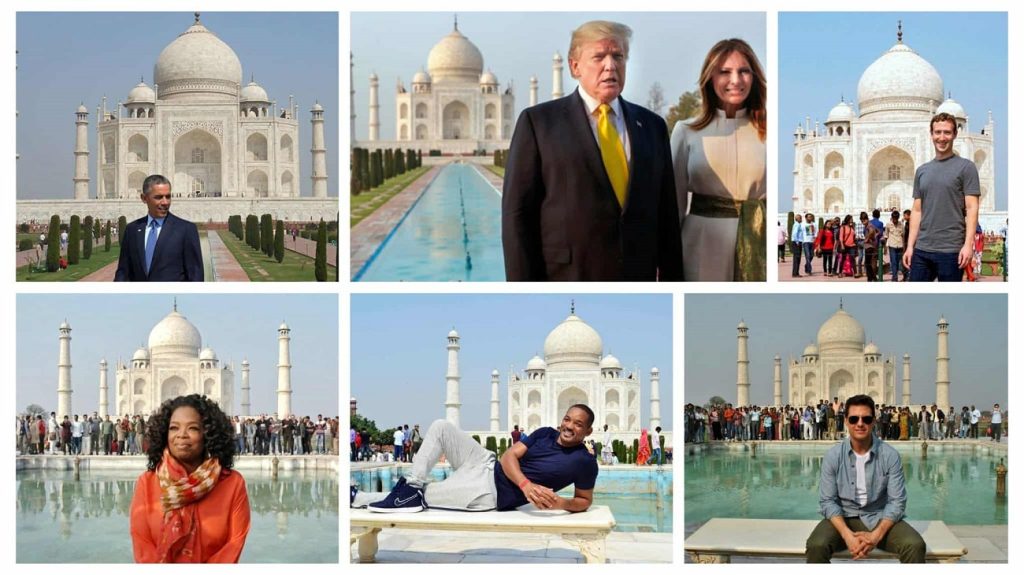Listen to the article
India’s iconic Taj Mahal has once again become the center of controversy as a new film threatens to reignite debunked claims about its origins, challenging established historical accounts with Hindu nationalist narratives.
The Taj Mahal, recognized as one of the Seven Wonders of the World and described by Rabindranath Tagore as “a drop of tear on the cheek of time,” stands as one of India’s most recognized cultural landmarks. The UNESCO World Heritage Site attracts approximately 12,000 visitors daily and accounts for 23 percent of all tourism to India.
Despite its firmly established history as a mausoleum built by Mughal emperor Shah Jahan to commemorate his wife Mumtaz Mahal, the monument has repeatedly become a target for revisionist claims from right-wing groups seeking to reframe it as originally Hindu architecture.
The Archaeological Survey of India (ASI), which maintains the structure, has repeatedly confirmed its status as a Mughal-era mausoleum. Even Culture Minister Mahesh Sharma stated unequivocally in 2017 that the Taj was not a Hindu temple, as some have claimed.
Nevertheless, controversy has persisted. When Yogi Adityanath became Chief Minister of Uttar Pradesh, his tourism department notably omitted the Taj Mahal from a booklet highlighting the state’s tourist attractions. When questioned about the omission, Adityanath remarked that the monument “does not reflect Indian culture.”
Now, a forthcoming film titled “The Taj Story,” starring Paresh Rawal, appears poised to mainstream long-discredited theories. According to its trailer, the film portrays the Taj as “Tejo Mahalaya,” purportedly a Shiva temple that was converted into a tomb by Shah Jahan.
This narrative stems largely from claims first promoted by P.N. Oak, a lawyer without formal historical training. Oak initially claimed the structure was built in the 4th century as a Hindu temple, later revising his timeline to the 12th century. Historians have thoroughly dismantled these assertions, noting that the architectural techniques used in the Taj’s construction simply did not exist in pre-Mughal India.
“Oak, who did not know Farsi, perhaps missed vital details that refute his theory of the Taj being a reused 4th-century palace,” explained historian Ruchika Sharma. Other contentions, such as the purpose of the monument’s 21 basement rooms, have been addressed by the ASI, which clarified they were designed for structural support and maintenance.
Oak’s petitions to the Supreme Court of India to recognize the Taj as a Hindu structure were dismissed for lack of historical evidence. Similarly, the Allahabad High Court in 2005 rejected a petition from Amarnath Mishra claiming the monument was built by a Chandela king.
Contrary to revisionist claims, extensive historical documentation supports the Taj’s Mughal origins. European travelers Peter Mundy and Jean-Baptiste Tavernier recorded contemporaneous accounts of Shah Jahan’s grief and his plans to build a memorial. The Badshah Nama, Shah Jahan’s official biography, provides detailed accounts of the construction process, including the involvement of chief architect Ustad Ahmad Lahori and numerous Hindu craftsmen who worked alongside Muslim artisans.
The land for the monument was acquired from Raja Jai Singh, either through compensation or as a gift. The Taj’s architecture reflects the syncretic traditions of the era, incorporating elements from various cultural traditions while utilizing the double-dome structures characteristic of Mughal architecture.
Financial records from Shah Jahan’s administration document the extensive expenditures for materials like Makrana marble and wages for approximately 20,000 artisans who worked on the project. These detailed accounts directly contradict revisionist narratives, including the unfounded rumor that workers’ hands were cut off after completion.
The promotion of “The Taj Story” follows a pattern of recent films like “The Kashmir Files” and “The Kerala Story,” which critics say distort historical events to advance Hindu nationalist perspectives. Historians and cultural observers worry that such productions serve to deepen societal divisions by vilifying Mughal rulers and, by extension, India’s Muslim population today.
As the film nears release, scholars warn that the revival of these debunked claims appears designed not to advance historical understanding but rather to serve political agendas through the manipulation of cultural heritage that has long been a unifying symbol of India’s complex, multicultural history.
Verify This Yourself
Use these professional tools to fact-check and investigate claims independently
Reverse Image Search
Check if this image has been used elsewhere or in different contexts
Ask Our AI About This Claim
Get instant answers with web-powered AI analysis
Related Fact-Checks
See what other fact-checkers have said about similar claims
Want More Verification Tools?
Access our full suite of professional disinformation monitoring and investigation tools




6 Comments
The Taj Mahal is a symbol of India’s rich cultural tapestry. Any attempts to reframe it through a narrow nationalist lens are concerning. I hope this documentary will contribute to a nuanced, fact-based discussion that celebrates the monument’s diverse heritage and significance for all Indians.
Fascinating debate around the origins of the iconic Taj Mahal. While historical accounts point to it being a Mughal-era mausoleum, I can understand the desire to explore alternative narratives and preserve cultural heritage. An open and respectful dialogue is needed to uncover the full truth.
The Taj Mahal is an incredible feat of architecture, regardless of its origins. Rather than get caught up in nationalist narratives, I hope this documentary will shed new light on the monument’s history and significance for all Indians. We should celebrate the country’s diverse cultural legacy.
Well said. Maintaining an open and objective perspective on India’s history and heritage is crucial, even when it challenges long-held beliefs. The Taj Mahal belongs to all Indians and the world.
As someone interested in Indian history and culture, I’m curious to see what new insights this documentary on the Taj Mahal might offer. While the established narrative seems well-supported, I’m always open to re-examining accepted facts, as long as the research is sound and the tone is objective.
Concerns over the potential misrepresentation of India’s heritage are understandable. However, I would caution against outright dismissing this documentary without first examining its evidence and arguments. Rigorous historical inquiry, not nationalist politics, should guide our understanding of the past.